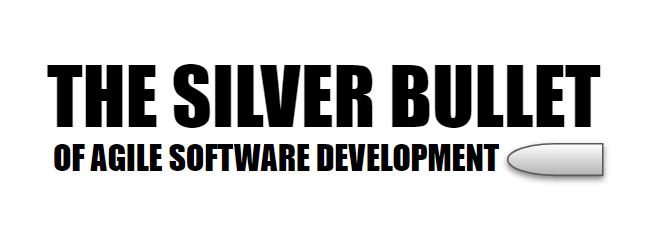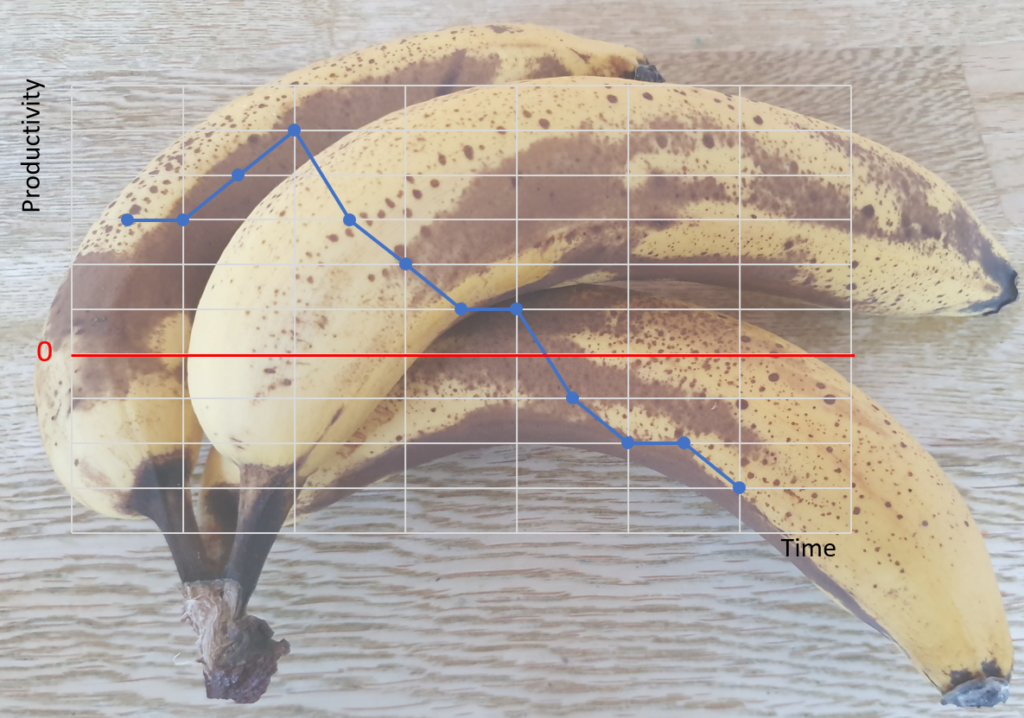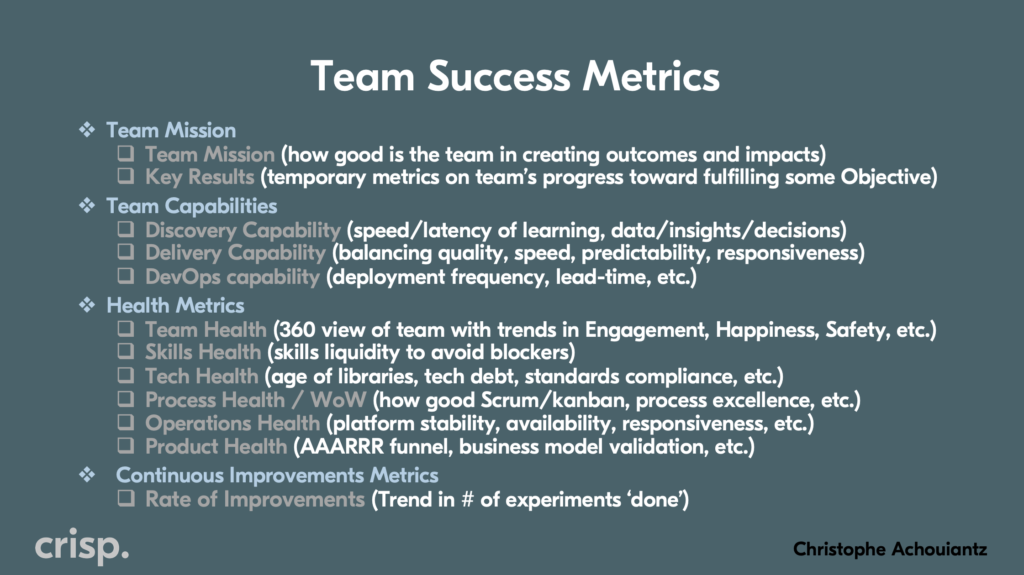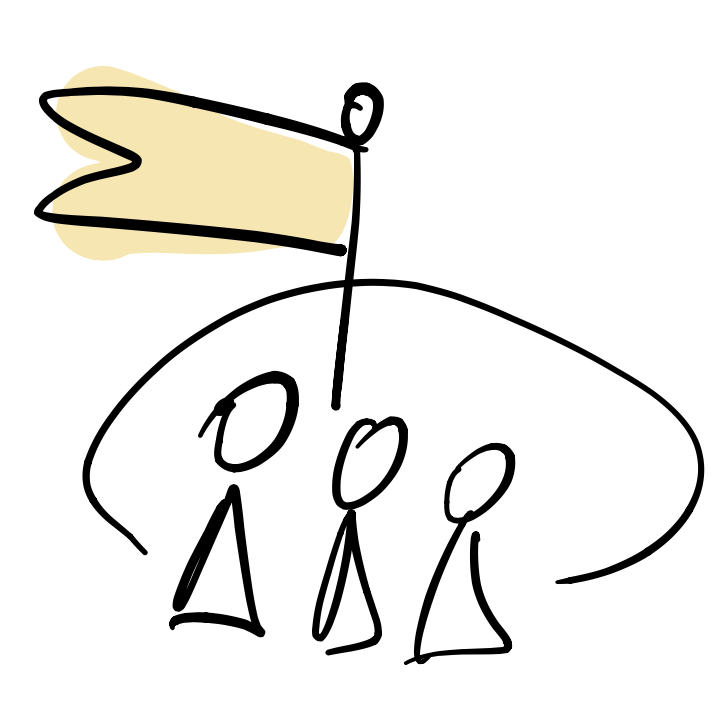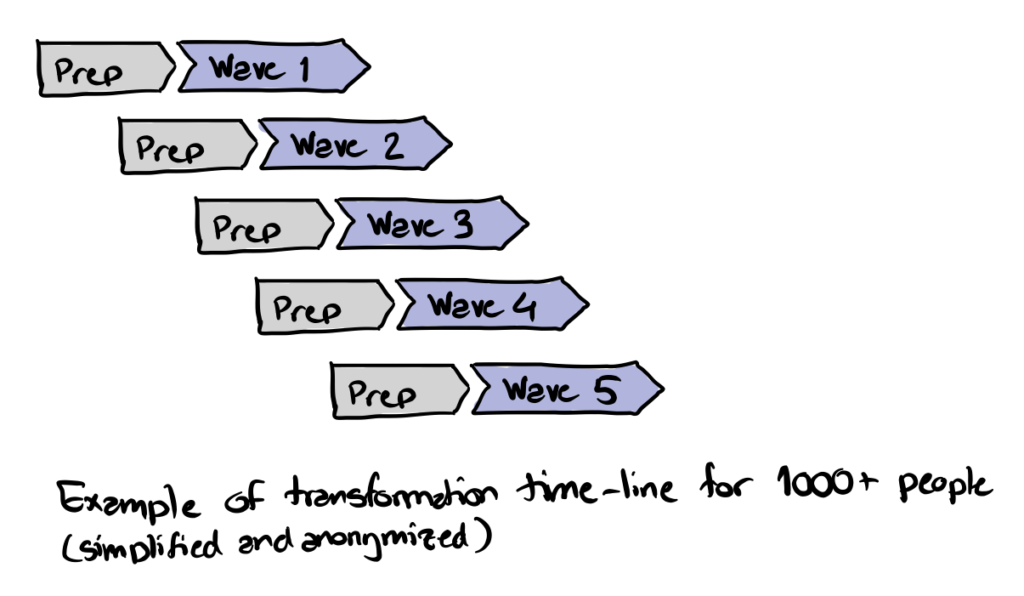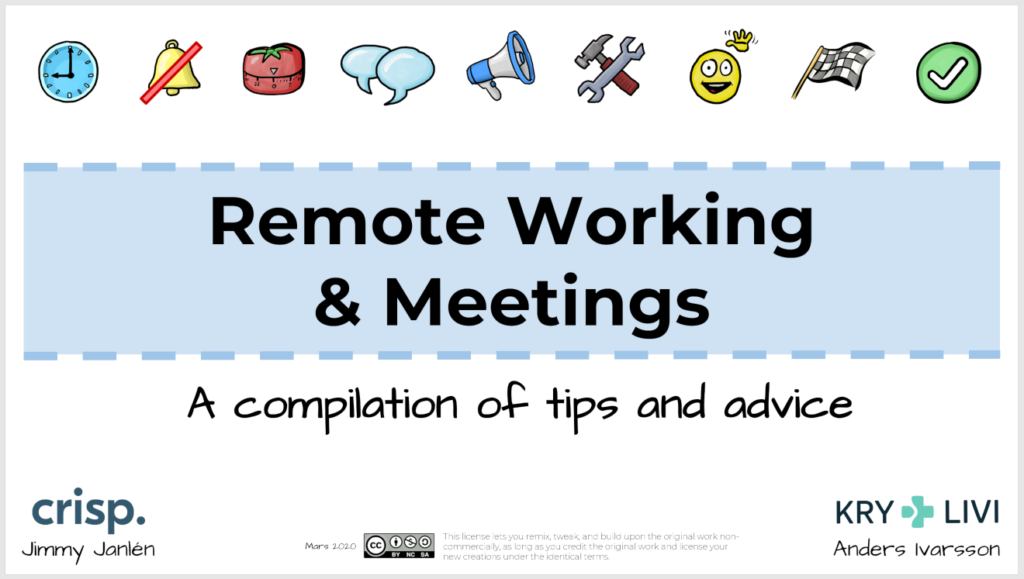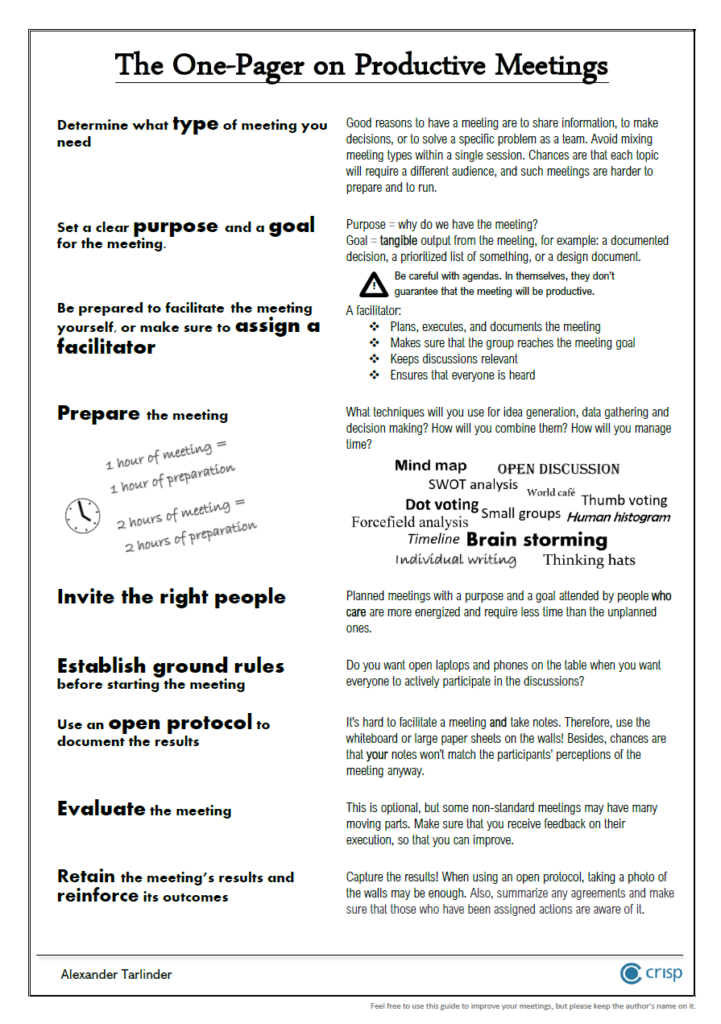Developers follow a relatively predictable development curve in their early careers. While there will be individual differences, pretty much every developer must pass through the following three stages: The Meta programming stage, the Design pattern stage, and the Functional composition stage. If left unchecked, the code produced during each of these stages may sometimes be quite harmful to a codebase. However, it represents an increase in the developer’s understanding of programming and should be harnessed and explained by more senior peers who know where that particular avenue leads.
Continue readingCrisp's BlogPage 4
from the Crisp Consultants
Individuals and interactions or processes and tools?
Individuals and interactions or processes and tools?
As the developer cheerfully runs over to work with Sue in the deployment team, with an extra cup of coffee, he is stopped by Charlie, the manager of the deployment team.
-Hey, where are you going?
-To see Sue about the deployment, the developer answered.
-Have you written a ticket?
-What? No, I’m gonna talk to Sue and we’ll do the deployment together as usual.
-Sorry, Charlie said, we have implemented a ticketing system last week, and you need a ticket. We can’t have developers running all over the place disturbing our team all the time!
True story.
Continue readingThe Silver Bullet of Agile Software Development
What should a struggling software development team do in a world of seemingly infinite improvement options?
Continue readingIntroducing: The Agile Leadership Practice Library
Have you ever wrestled with these questions in a leadership scenario?
“How can I get the company to be more proactive and self organized without me being around all the time?”
“I’m a practical guy, I get most theories, but what do I do with them?”
“What is a good start when we are talking about building an Agile organization?”
If so, then this is for you.
Today the Agile Leadership Practice Library is launched
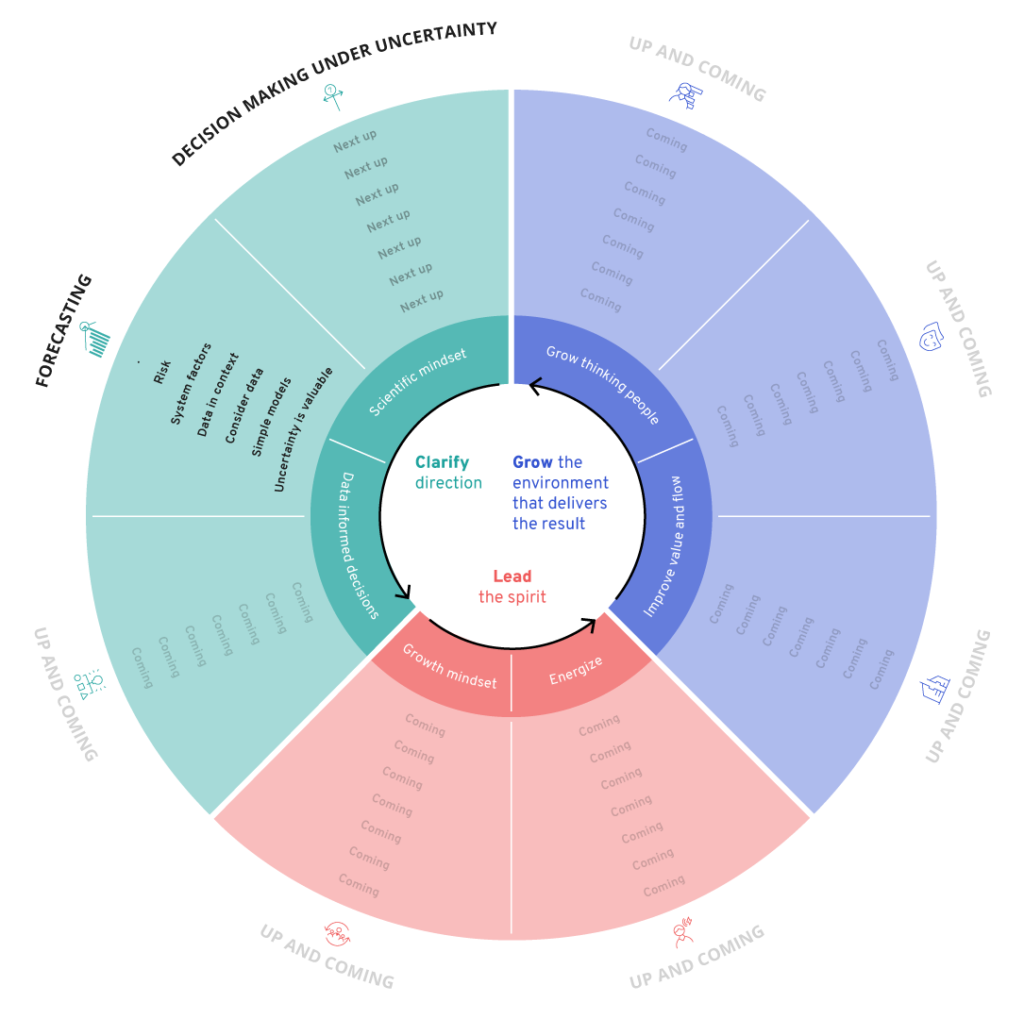
Continue reading
How to Achieve Zero or Negative Productivity
Do you feel like your organization’s development process delivers too little at too slow a pace? Your gut feeling is probably correct. In this post, I’ll describe three paradigms that result in near zero or even negative productivity.
Continue readingHow to Assess a System’s Quality in Two Hours
You can get a fair feeling for any software system’s quality by putting in just two hours. Here’s how.
Continue readingVideo: Improve your decision making under uncertainty, using four simple techniques
4 simple techniques to improve decision making, in time of uncertainty
Continue readingTeam Success Metrics
Are we successful as a Team? Can we measure that? We look at 10+ areas of team success and how to measure them. Get inspired to choose the metric you need, right now, on your path to high-performing!
Continue readingShape the future – share an act of leadership!
What does it take to lead in an Agile environment? You have probably seen inspiring acts of leadership that made a difference. We’d like to hear about it! Today we launch activeagileleadership.com. A platform for leadership insights and practices in Agile environments. Want to know more? Let’s start with Mindset. Leading in an Agile environment
Continue readingHow to create useful documentation – only write the table of content
This article is a follow-up to my post on lean documentation that I published some time ago. In summary, lean documentation is characterized by being easy to consume and simple to keep updated. The purpose of lean documentation is to help you, as the reader, find answers to your questions, not to hold the detailed answers
Continue readingThe paradox of masterly management leadership style
To understand this article, first read Managing in Mayberry by Don Gray & Dan Starr: https://www.donaldegray.com/managing-in-mayberry-an-examination-of-three-distinct-leadership-styles/ In short, it is about three different styles of leadership, depending on their view of the problem. The situation is that, in heavy traffic, left-turners may cause a queue of cars that leads to a dangerous situation. Officer Barney’s micromanaging leadership
Continue readingThe Lead-Squad Protocol
How to successfully drive initiatives, objectives or opportunities that require several squads (or teams) to succeed? How to do this in a way that respects the agile mindset without falling into the command-and-control trap? Today, this problem is more complex than it seems. We’ve designed and built our squads for self-organization and autonomy in the
Continue readingSlides from Agile Islands 2020 – “Agile outside IT”
Agile outside IT – presentation at Agile Islands 2020
Continue readingIntegrating Discovery & Delivery – Patterns that work

This is the second article in my series on integrating discovery and delivery. In the first article I outlined some common challenges I have seen holding organizations back from benefiting fully from both.
In this article I will introduce some patterns that will help you integrate product discovery and product delivery in a way that works. These patterns have all been field tested in practice.
Continue readingIntegrating Discovery & Delivery – Common Challenges

Most organizations that I meet in my work are struggling to integrate product discovery and agile delivery in a simple practical way that works.
I will illustrate what I mean by giving you examples of a couple of very common issues.
Continue readingDriving Change in a VUCA world
If the acronym VUCA hasn’t made sense so far, then in these pandemic Covid-19 times it surely must. The acronym stands for Volatile, Uncertain, Complex and Ambiguous. So when people refer to a VUCA world, they refer to a world where you cannot possibly foresee everything ahead of time (if anything, really). This is true to the whole world – the planet Earth, but also to the world, or context if you like, in which you and your organization operate.
Continue readingPodcast: The SimCorp journey – to and beyond SAFe
A couple of years ago, SimCorp made the leap into Agile using SAFe. In this podcast, we get inside stories to Why they started their journey into Agile The results they have gotten so far Why they now feel ready to make a new leap, inspired by a new Agile vision for the future Participants:
Continue readingComparison of three strategy alignment frameworks – OKRs, Spotify Rhythm and Art of Action Strategy Briefing
A downloadable version of this article can be found here.
One of the strongest management trends right now in companies striving towards Agile is undoubtedly OKRs, “Objectives and Key Results”.
But how do OKRs stack up against the alternatives when it comes to alignment frameworks? And what are the potential undesirable behaviors that come with them?
That is what I intend to explore in this article.
Continue readingThe first Product Discovery meetup
This week Crisp hosted its first Product Discovery meetup. We had the privilege to listen to lightning talks by notable experts from the Stockholm Product community: Martin Christensen shared his holistic Product Discovery framework. Johanna Olander presented SVT Play’s outcome based roadmap. Viktor Cessan shared his thoughts on how Product Discovery can happen naturally if
Continue readingHacking Your Product Leader Career
Last Wednesday, we had the pleasure to host a webinar with Gibson Biddle, former VP Product at Netflix, titled “Hacking Your Product Leader Career”. During the talk Gibson shared stories from his career and tips on how to have a scientific approach to your career progression. Some key take-aways: Keep it simple. Understand your strengths
Continue readingBreaking up the monolith at Discovery and enhancing subscription flexibility in one fell swoop
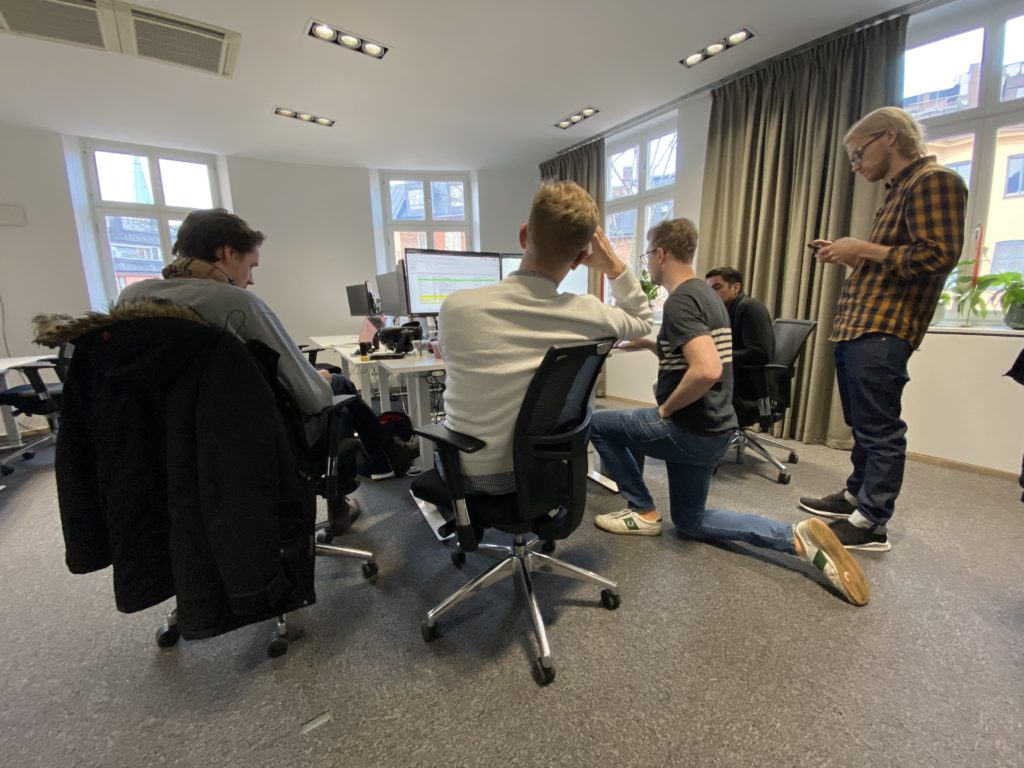
Max – Tell me briefly what your team is up to @ Discovery?
I’m one member of a devteam which takes care of external API’s. We build services for streaming TV (OTT), for example user management, authentication, user entitlements and playback services.
We started this effort to enable a more flexible way to assign entitlements to users, for example through affiliates (like cable TV companies and mobile phone operators). Before, you had to be a subscriber at Discovery to be able to view any content. Being a direct subscriber is called the DTC model, ”Direct To Consumer”. But a large part of the business in some markets still comes from the so called “TV Everywhere” model where the customers come in via affiliates.
Continue readingA facilitation guide for team start ups and restarts
This guide explains the main ingredients necessary for facilitating a team start up and provides you with six example agendas. The guide includes questions to think about when you set up the facilitation and during the meeting.
The components needed for a team start up

- Purpose or mission -> why does the team exist?
- What is the business value?
- What does success look like?
- Understanding who the team members are:
- Clearly defined membership list -> who is on the team?
- Make sure that people get to know each other -> who are my team members as people?
- What are people’s skill sets? What do they know now, what do they want to get better at?
- Agree to how to work together
- What do team members expect from each other
- What behaviors does the team want to have
- How to talk to each other?
- How to split up work?
- What meetings/sync/feedback is needed
Questions to consider for each area
Continue readingRemote creation of an Agile vision
The story: Our client wanted help creating an Agile vision for the future “post SAFe”. How could we do this given that they work on multiple sites?
Can this be done remotely? Yes! During these challenging times, I thought of no better opportunity to share how we approached it.

(image credit: Jirka Matousek, Flickr)
Continue reading
Remote Working & Meetings – A compilation of tips and advice
Are you, as many others looking, for advice and tips for remote working and meetings? You’re not alone. At KRY / LIVI, me and Anders Ivarsson, compiled a list of tips and advice on how to make the most of remote collaboration and working from home. We suspect many are looking for similar advice and
Continue readingIs Your Work Meeting Productive?
If not, you’re in good company. I’ve written a short summary on how to run a productive meeting. It’s not new. It’s not unique. It’s not revolutionary. But sometimes one feels a calling. Thanks Jimmy for helping out with the closure part. Click below to download a printable version.
Continue readingCan my design be used for evil?
There has been a lot of talk about ethics in UX circles over the last couple of years. This is a good thing. However, most of it has not been actionable in everyday work. And, to be honest, most ethically problematic products weren’t designed to be unethical. I am quite sure the designers of smart thermostats, easier purchase flows, sharing economy apps and social networks didn’t expect that their work would be used for domestic abuse, unwanted purchases, worker exploitation and skewed world views. In my experience, UX designers are generally a group of people who believes in the good of their fellow humans which means most of the time they don’t even consider how their designs could be used in unintended ways that might be harmful or dangerous. But maybe we, as a group, should. Maybe we should try to imagine the worst ways our designs could possibly be used as a part of our design process so we can at least try to mitigate the risk of that happening.
Interview with Stephen Bungay on Strategy Execution and the gaps of OKR’s
Interview with Stephen Bungay on:
– What is the “Art of action” ?
– What is the differences/similarities to OKR’s?
– What organisational capabilities needs to be there, for alignment frameworks to really work?
En definition av Agilt mindset

Vad är ett Agilt mindset och hur beskriver man det?
Det är en fråga jag fick finna svar på i och med det sista tillfället i Scrum Master programmet Mia Pilebro (agil coach på arbetsförmedlingen) och jag genomförde på Arbetsförmedlingen. Denna artikel beskriver den definition jag landade i, resonemanget bakom samt varför detta är viktigt då man förändrar en organisation mot en Agil kultur och arbetssätt. De definitioner jag hittade när jag sökte svar på frågan kändes inte kompletta, enligt mitt tycke. Efter diskussion med mina kollegor på Crisp, och med Mia, landade jag i en definition som består av ett antal påståenden, hållningar och en intention.
Continue readingThe Value Responsibility shift – Evolving Beyond the SAFe and LeSS frameworks
Are you struggling with improving at a fast enough pace? Perhaps you started your Scaled Agile journey by applying SAFe, parts of SAFe, or maybe even LeSS. What I’ve found is that once companies have started to apply a certain model, which represents one school of thought. they fail (or struggle hard..) to evolve beyond
Continue readingHow Are You Feeling?

Did you answer that question by saying: “I’m fine”? Maybe you aren’t fine, and answered that you were happy, sad, or angry? Did you stop to think about what you really mean by that answer? How are you really feeling? Why are you feeling this way and what do you want to do about it?
In his book, “Permission to Feel”, Marc Brackett talks about the importance of Emotional Intelligence and emotional skills. He shows you how you can develop a more varied emotional vocabulary. You learn how to deal with the actual challenges that you face by understanding how you feel. Here are my thoughts on how Brackett’s method will help you develop your emotional skills. By understanding how you feel, you can figure out what you need to do which in turn will influence how you feel, enabling you to create an upward emotional spiral.
Continue reading
